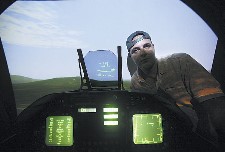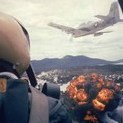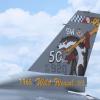- 3 replies
- 1,725 views
- Add Reply
- 1 reply
- 2,713 views
- Add Reply
- 3 replies
- 2,121 views
- Add Reply
- 58 replies
- 66,676 views
- Add Reply
- 4 replies
- 1,106 views
- Add Reply
- 1 reply
- 17,903 views
- Add Reply
Avsim Hacker Identified

By Fates,


"Avsim is one of the largest sites serving the flight sim community. The publisher of a flight simulator site targeted by a hacker in May says it has presented a file of evidence to UK police identifying the perpetrator. Avsim said it had "incontrovertible evidence" about the hacker's identity. The attack wiped data held on two servers and "effectively destroyed" the site, which is still being rebuilt. The US firm said it expected the criminal complaint, filed with London police, to lead to
Hanger 09

By Fates,


Jonny Ryder, Cyberdome Technologies, is about to open a Entertainment Arcade called "Hanger 09" and is banking on its location to attract business. Just miles from Oceana NAS, Ryder is building incredible simulator cockpits and mating them with Graphsims FA-18/OIF......and selling pizza all under the same roof.
Read more at >>>PilotOnline .com<<<
IL-2 Sturmovik: Birds of Prey Missions

By Erik,


IL-2 STURMOVIK: BIRDS OF PREY MISSIONS REVEALED
TEST YOUR METTLE AND EARN YOUR WINGS
505 Games in collaboration with 1C Company have today released more information on the mission mode in IL-2 Sturmovik: Birds of Prey. The highly anticipated WWII aerial combat title will hit the shelves on 4th September for Xbox 360, PS3, PSP and DS.
Mission mode extends the game play experience in IL-2 Sturmovik: Birds Of Prey by offering new missions that are unlocked through progress in the main camp
Reviewing the Logitech G940

By Ruggbutt,


This year has been a great year for flight simmers. Announcements of new software and new hardware piqued the interest of the flight sim community. Of all the products we were promised nothing generated the buzz that the Logitech G940 did. It was promo'd at E3 earlier this year. With E3 being an industry show many people just didn't get the chance to see it, touch it or talk to someone who had. I was fortunate enough to get my hands on the G940 and run it through it's paces. Those of you t
New Theme Available

By Fates,


Just finished up another new theme for everyone. Big Shout out to Erik on the group icons! We plan on creating new sets for all the themes. You can select the Theme's skin in the lower left on any page.
Enjoy!
An Interview with Jug

By Dave,


Thank you Jug for agreeing to do this interview.
Can you tell us little about yourself?
Born in Virginia, raised in Tennessee, undergraduate at Auburn University, AL, where I lettered in varsity football and varsity wrestling. ROTC to pilot training and graduated UPT in 1971. 20 years in USAF air operations, MS from Southern Cal, 84 grad of the Brazilian Air Command and Staff College, Assistant Air Attache US Embassy Brazil, returned to school upon retirement and now I am a computer progra





